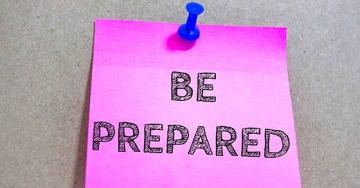Recent News & Blog / Every nonprofit needs a disaster plan

August 28, 2023
Almost no region of the United States has escaped some form of natural disaster or extreme weather this summer. Although wildfires, floods and unusually high temperatures have grabbed the headlines lately — for good reason — your not-for-profit also needs to be prepared for such unnatural disasters as terrorist threats and mass shootings. It’s a lot to think about. But the better prepared your organization is for an emergency, the higher the likelihood that you can protect staffers, volunteers and clients from harm and recover operations in a timely manner.
Anticipating threats
No organization can anticipate or eliminate all possible risks, but you can limit the damage of potential risks specific to your nonprofit. The first step in creating a disaster plan is to identify the threats you face when it comes to your people, operations and technology. If you work with vulnerable populations, you may need to take extra precautions to protect your clients. For example, you might need a fire evacuation plan that provides special procedures for wheelchair-bound and senior clients.
Also, assess potential damages if your operations were interrupted. For example, if your city is vulnerable to hurricanes and flooding, what are possible outcomes regarding property damage and financial losses? How might you limit damages and unexpected costs by, for example, waterproofing your building’s foundation and maintaining flood insurance?
Team responsibilities
To flesh out your disaster plan, designate a lead person to oversee its creation and implementation. Then assemble teams to handle different duties. For example, a communications team could be responsible for contacting and updating staff, volunteers and other stakeholders, as well as updating your website and social media accounts. Other teams might focus on safety and evacuation procedures, technology issues (including backing up data offsite) and financial and insurance needs.
One of the most important components of your plan will be recovery. Think about how your nonprofit will get employees back to work and your office and services up and running again. You may need to plan in phases that can be rolled out depending on the extent of the disaster’s damage.
Limited resources
Smaller nonprofits may worry about how they can expend their limited resources to create a comprehensive disaster plan and take actions to protect their assets. Concentrate on the most likely emergencies. For example, if your nonprofit is located in the Northern Plains, you probably don’t need to worry about hurricanes or a big earthquake but do need to plan for the possibility of tornadoes. Increasingly, organizations in every part of the country must have procedures for fires and power outages due to extreme heat.
© 2023